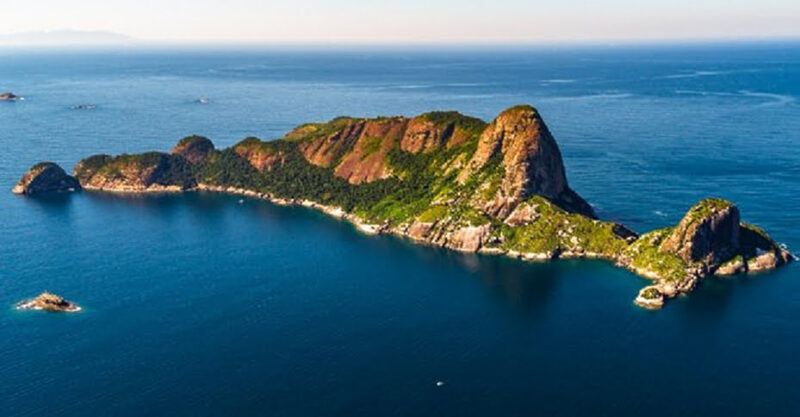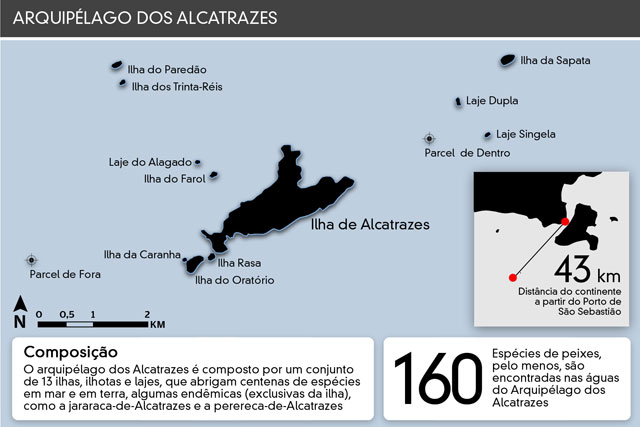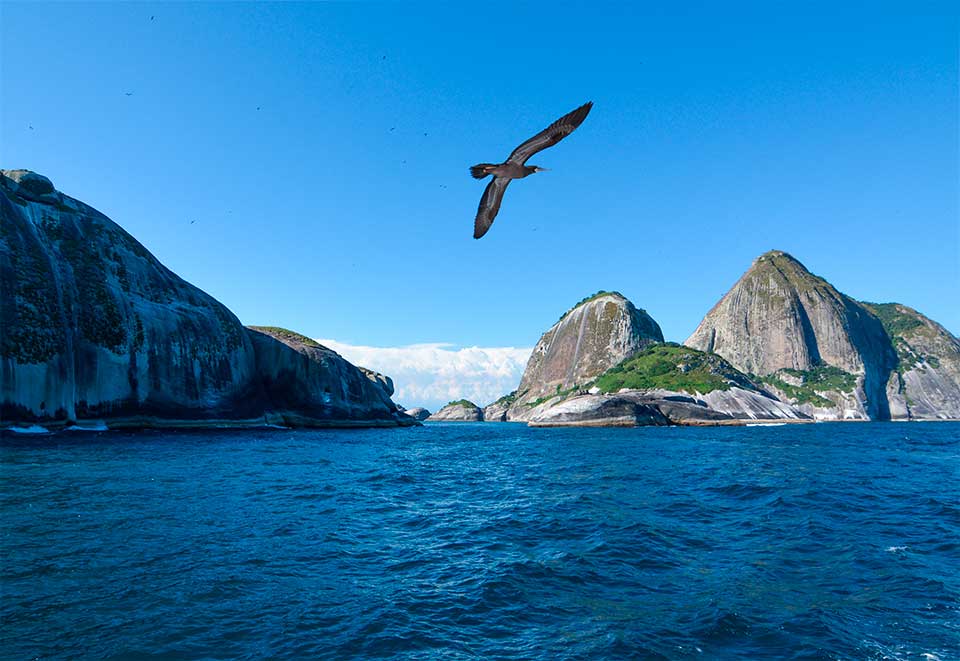The Alcatrazes Archipelago was once the target of cannon fire, Alcatrazes is a living laboratory for evolutionary studies.
Located just a few kilometres off the coast of São Paulo State, the Alcatrazes Archipelago is a small group of islands of strategic importance to Brazil that has been the target of various interests.

Isolated from the mainland for some 20,000 years, the land animals of the Alcatrazes Archipelago, 35 kilometres off the coast of São Paulo, hold secrets of evolution.

The Alcatrazes archipelago is made up of five larger islands and several smaller islets and rocky outcrops that rise out of the intense blue of the Atlantic Ocean.

About three hours by boat from the port of São Sebastião, the largest island in the group, also known as the Alcatrazes, is home to a great variety of plants and animals, many of which are endangered and found nowhere else on the planet.
This wildlife sanctuary, its animals and plants have been studied for decades.

The island’s history, its scenic beauty and the ease with which you can spot some of the most iconic species that inhabit this huge mountain in the sea continue to attract conservationists and nature lovers such as birdwatchers, divers and biologists from all over the world.
Two species are particularly abundant – the common frigatebird (Fregata magnificens), also known as the shearwater, and the brown booby (Sula leucogaster).
As soon as you arrive on the island, and long before you disembark, you can see hundreds of birds flying over the sparse forest that looms imposingly over the huge rocky outcrop.
Disembark under the watchful eye of the frigatebirds and boobies of Alcatrazes, the largest island breeding site for birds in south-east Brazil.
But the archipelago is not only home to seabirds.
Among the inhabitants, three others are worth mentioning and were the reason for my visit in November 2020, accompanied by a group of scientists from the Butantan Institute: a snake(Bothrops alcatraz), a frog (Ololygon alcatraz) and a frog frog (Cycloramphus faustoi).
The snake and frog were not described until after the turn of the millennium, in 2002 and 2007 respectively. Because they are restricted to Alcatrazes, a small and fragile area, the three species are classified as critically endangered, the highest category on the official national list of endangered species.
Although researchers visited the archipelago sporadically in the early 20th century, these discoveries and descriptions were the result of intensified research on the island in the 1980s and 90s, the same period when the island was literally bombed.
The Brazilian Navy used Alcatrazes Island as a target for cannon firing exercises.
In the early 1980s, Alcatrazes was used by the Brazilian Navy as a target for gunnery training.
Despite protests from environmentalists who were beginning to discover the biodiversity of the place – sparked after a fire caused by gunfire destroyed 20 hectares of the island in 2004 – military training continued until 2016, when the Alcatrazes Archipelago Wildlife Refuge was created.
Tourist access was opened at the end of 2018 and is strictly controlled – landing on the islands is still forbidden.
Today, the main island is fully protected and live-fire exercises, when they take place, are held on Sapata, a smaller island with less dense wildlife.
Publicações Relacionadas
How to get there, when to go and what to do in Fernando de Noronha?
Jararaca-ilhoa: Endemic Species of Queimada Grande
Diving in the Fernando de Noronha Archipelago
São Pedro and São Paulo Archipelago
Trindade and Martim Vaz: Discovering the Archipelago
Fernando de Noronha archipelago
Brazil has oceanic and continental islands
History of Itaparica Island in the Baía de Todos os Santos
Experience the Tropical Paradise of Ilha Grande in Rio de Janeiro
Ilhabela is the hottest spot on the north coast of São Paulo State
Ponta do Boi Lighthouse in Ilhabela
The island of Santa Catarina is part of the municipality of Florianópolis
Itamaracá Island: Your Ultimate Guide to Tropical Bliss in Brazil
Atol das Rocas - Origin, Biology, Climate and Shipwrecks
Fernando de Noronha Beaches: A Complete Guide
Spinner Dolphins in Fernando de Noronha: A Guide
Wreck of the Corvette Ipiranga in Fernando de Noronha
Anchieta Island: History, Beaches, and Nature
This post is also on:
Português
English
Deutsch
Español
Français





















